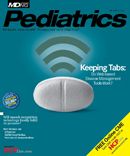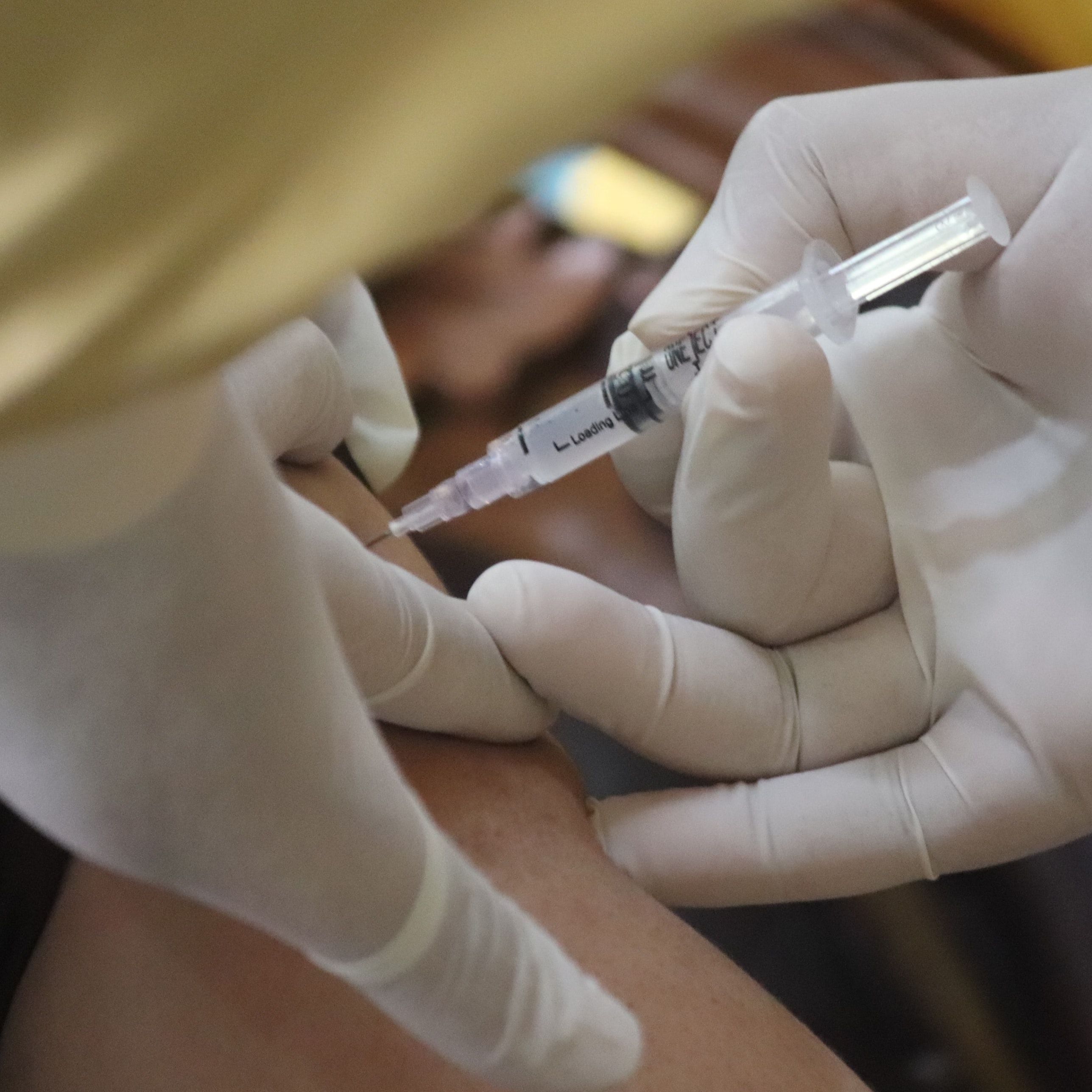Publication
Article
MDNG Pediatrics
Vaccines and Immunizations
//Medical Websites
This American Academy of Pediatrics (AAP) site serves as a one-stop shop for pediatricians and other care providers seeking “the right tools to help immunize patients effectively and efficiently.” Here, visitors can sign up for a newsletter featuring resources, alerts and updates, and more information on immunizations and access several resources, including guidelines for all patients—including special populations—and best practices for implementing them into the practice; tips for communicating with families and answers to common questions; links to the latest research in vaccine science, including surveys and articles; and information on issues such as financing, maintaining supplies, and liability.
Prevention of Influenza: Recommendations for Influenza Immunization of Children, 2007-2008
Originally published in Pediatrics in April of 2008, the recommendations featured here are still considered to be the standard for influenza immunization. According to this site, the AAP recommends annual immunization for all children with high-risk conditions whoare six months of age and older, for all healthy children agessix through 59 months, for all household contacts and out-of-homecaregivers of children with high-risk conditions and of healthychildren younger than five years, and for all health care professionals. Visit this page to improve your knowledge of the epidemiology and clinical manifestations of influenza, the efficacy and safety of vaccines, proper timing of influenza vaccine administration, contraindications and precautions, and a listing of the patient groups for which influenza immunization is recommended.
//The Educated Patient
Founded by former First Lady Rosalynn Carter and former First Lady of Arkansas Betty Bumpers to help “protect children from vaccine preventable diseases by raising parental awareness of the critical need for timely infant immunizations,” this site features dozens of resources for parents and advocates of immunizations, which have saved “millions of lives over the years and prevented hundreds of millions of cases of diseases.” Parents can view videos on the “Dangers of Influenza” and “Timely Immunizations,” learn how to better track immunizations, link to a page providing immunization schedules for children in different age groups, access information on diseases and the vaccines used to prevent them, and read about developmental milestones for children of different ages.
Questions & Answers about the 2010-2011 Flu Season
With flu season in full swing, you might want to bookmark this resource from the CDC, which provides answers to some of the many questions parents ask, including: “Will new strains of flu circulate this season?” “How effective is the flu vaccine?” “How do we know if there is a good match between the vaccine viruses and those causing illness?” “What actions can I take to protect myself and my family against the flu this season” ““Is there treatment for the flu?” and “What is antiviral resistance?” The site also features everyday preventative steps to reduce the spread of germs.
//Online CME
Cocooning: Targeted Immunization to Prevent Severe and Fatal Pertussis in Infants
Credits: 1.00
Fee: $25.00
Expires: March 1, 2013
Multimedia: Audio/Video
Listen as C. Mary Healy, MD, of Texas Children’s Hospital, describes the epidemiology and disease burden of pertussis; explains the rationale behind cocooning, the targeted immunization strategy recommended by the CDC to prevent pertussis; discusses educational and implementation strategies necessary to establish pertussis cocooning in hospital settings; and identifies barriers to cocooning, as well as ways in which they can be overcome.
Immunizations: Best Business Practices
Credits: 1.00
Fee: $20 for AAP Members ($24 for non-members)
Expires: June 25, 2012
Multimedia: None
This course provides useful information on the administration, purchasing, overhead, storage, and coding of child immunizations. Designed specifically for pediatricians, the activity reviews cost-conscious ways to order and purchase vaccines, the proper action to take when a refrigerator is out of temperature range to prevent vaccines from spoiling, and how to discuss with parents or caretakers the rationale for informed consent and the technical aspects involved in administering a vaccine to a two-month-old infant.
Credits: 1.00
Fee: None
Expires: February 12, 2010
Multimedia: Audio/Video
In this archived Pediatric Grand Rounds webcast, Allison Messina, MD, of University of South Florida College of Medicine, discusses the vaccines available for international travel; identifies basic malaria prophylaxis; and evaluates travel medical assessment and counseling.
//eAbstracts
Journal: Cochrane Database of Systematic Reviews (November 10, 2010)
Authors: Lassi Z, Haider B, Bhutta Z
Purpose: To assess the effectiveness of community-based intervention packages in reducing maternal and neonatal morbidity and mortality and improving neonatal outcomes.
Results: A review of 18 randomized trials covering a wide range of interventional packages did not show any reduction in maternal mortality. However, significant reductions were observed in maternal morbidity, neonatal mortality, stillbirths, and perinatal mortality as a consequence of implementation of community-based interventional care packages, which also lead to a 40% increase in referrals to a health facility for pregnancy-related complication, and a 94% improvement in early breastfeeding rates.
//Clinical Trials
Text Message Reminder-Recalls for Early Childhood Vaccination
Study Type: Interventional
Age/Gender Requirements: 7 months-50 years (male/female)
Sponsor: Columbia University
Purpose: Despite efforts to increase immunization rates, pockets of low coverage and outbreaks of vaccine preventable disease persist; this brief trial is being conducted to determine “the effectiveness of tailored text message appointment and immunization reminders linked to a well-established and functional immunization registry to increase coverage rates and timeliness of the sentinel vaccines of MMR1 and DTaP3.”
A Test of the Effectiveness of a Device and Distraction for Pediatric Immunization Pain
Study Type: Interventional
Age/Gender Requirements: 4 months-12 years (male/female)
Sponsor: MMJ Labs LLC
Purpose: This six-month trial will determine whether the use of distraction cards along with a vibrating cold pack can decrease the pain of routine pediatric immunizations when compared to a placebo device or standard care. Pain in infants and toddlers will be assessed by coding videotapes using the FLACC (face, legs, activity, crying and consolability) scale, while patients age 4 and older will be asked to rate their pain.
//Podcasts
Adolescent Vaccination: Physician Challenges and Solutions
Listen as Sanford R. Kimmel, MD, of the University of Toledo College of Medicine identifies potential barriers that clinicians face in providing immunizations to pediatric patients and discusses potential solutions for improving immunization rates in this Journal of Adolescent Health podcast.
In this podcast, Christina Dorell, MD, MPH, of the CDC’s Immunization Services Division, talks about the importance of vaccinations in adolescents.
PHARMA FOCUS
Menveo (meningococcal conjugate vaccine)
//Medical Websites
Menveo.com for Health Care Professionals
Visit this site to learn about Menveo, “a vaccine indicated for active immunization to prevent invasive meningococcal disease caused by Neisseria meningitidis serogroups A, C, Y, and W-135” in patients ages 11 through 55 years. Physicians can access dosing and schedule information, learn how to prepare the vaccine for administration, view the results of a trial comparing Menveo to Menactra, read storage and handling instructions, download the full prescribing information, order the vaccine, and obtain reimbursement support. Also included is a section addressing frequently asked questions, and an explanation of why adolescents are at increased risk for meningococcal disease.
//eAbstracts
Journal: Vaccine (October 27, 2010)
Authors: Halperin SA, Gupta A, Jeanfreau R, et al.
Purpose: To compare “the immunogenicity and safety of an investigational quadrivalent meningococcal vaccine conjugated to CRM-197 (MenACWY-CRM) with a licensed quadrivalent vaccine conjugated to diphtheria toxoid (MCV4) in children aged 2-10 years.”
Results: In the 2,097 children randomized to receive the study vaccine, researchers found that “MenACWY-CRM and MCV4 were immunogenic and well tolerated.” They concluded that “seroresponse to MenACWY-CRM was statistically noninferior to MCV4 for all groups, and statistically superior for groups C, W, and Y.”






